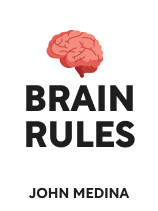

This article is an excerpt from the Shortform book guide to "Brain Rules" by John Medina. Shortform has the world's best summaries and analyses of books you should be reading.
Like this article? Sign up for a free trial here .
Do you have trouble falling asleep? What is sleep debt, and how can you conquer it?
According to Dr. John Medina in Brain Rules, sleep debt is the amount of sleep you lose versus the amount your body needs. Say you need eight hours of sleep, but you only got six. You have two hours of debt sleep, and it consistently builds up the more sleep you lose.
Learn more on what sleep debt is, and a few techniques to get a good amount of sleep.
How Does Sleep Debt Happen?
Because everyone has their own sleep type, our society’s often-inflexible working hours cause many people to sleep poorly. In American society, for example, many people’s work schedules require them to work from early morning to early evening.
This works for early risers since it allows them to go to bed early and wake up early. But, if you’re a night owl, you might find that your sleep type runs against the standards of contemporary society. As a result, owls might accumulate a “sleep debt,” which is what happens when they lose sleep so consistently that it’d take a long time to catch back up again, and can suffer cognitive difficulties as a result.
Many people live with sleep debt, which is often caused by demanding work schedules that don’t align with our chronotypes. If you accumulate a sleep debt over a long period of time, it can be hard to catch up, since you can’t solve it by getting one good night’s sleep. According to research, it could take up to nine days to fully catch up on sleep debt.
Getting Rid of Sleep Debt
Medina has explained what is sleep debt, and now gives a few recommendations for getting sufficient sleep:
- Maintain a consistent sleep schedule. Keep a sleep diary, so you can see if you have any disruptive sleep patterns. Take short afternoon naps.
- And if sleep loss is causing you difficulty in your day-to-day life, talk to your doctor.
- Increase your sleep time gradually until you regularly feel well-rested.
How to Manage Difficult Sleep Schedules
To compensate for mismatches between sleep type and working hours, Medina suggests that you set your schedule to match your sleep type if you’re able. He also recommends that companies match employees’ schedules to their sleep types.
(Shortform note: Research suggests that, when employers match employees’ schedules to their chronotypes, employees are less fatigued, more honest, and happier.)
He also recommends that you take a mid-afternoon nap when possible. A nap at this time of day can create cognitive benefits because Process S and Process C (the hormonal processes that send us to sleep and keep us awake) reach the same level in the mid-afternoon and each requires a lot of energy at that time, which makes us feel sleepy. Medina recommends that businesses and schools give employees or students a half-hour break in mid-afternoon or at least refrain from scheduling meetings or presentations during the “nap window.” Figuring out a consistent sleep schedule can help you catch up on sleep, and avoid sleep debt.
(Shortform note: A study NASA conducted on astronauts shows the effectiveness of taking a midday nap. Compared to astronauts who didn’t nap, astronauts who took a 26-minute-nap in the middle of the day were up to 54% more alert and improved their work by up to 34% more.)

———End of Preview———
Like what you just read? Read the rest of the world's best book summary and analysis of John Medina's "Brain Rules" at Shortform .
Here's what you'll find in our full Brain Rules summary :
- An explanation of how the brain works in a simple and accessible way
- The 12 rules that help fulfill the core functions of the brain
- How to improve your thinking and learning abilities






